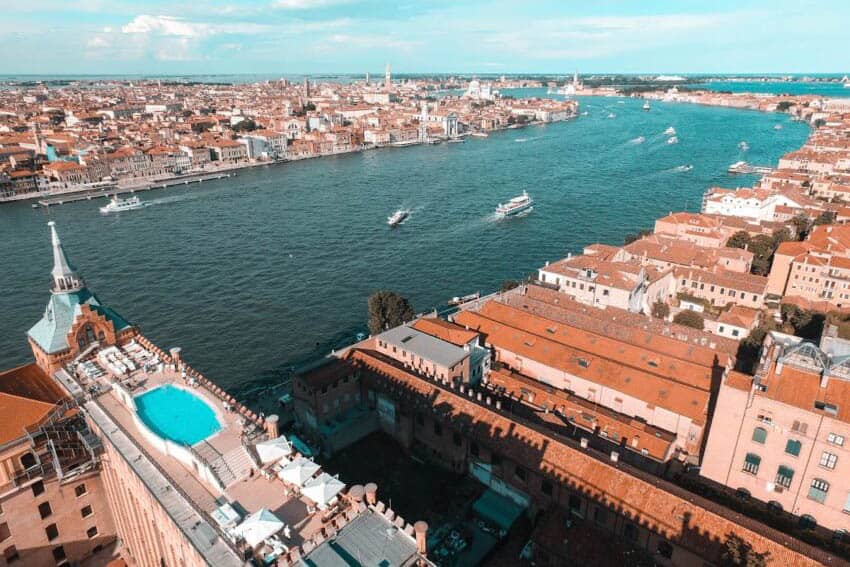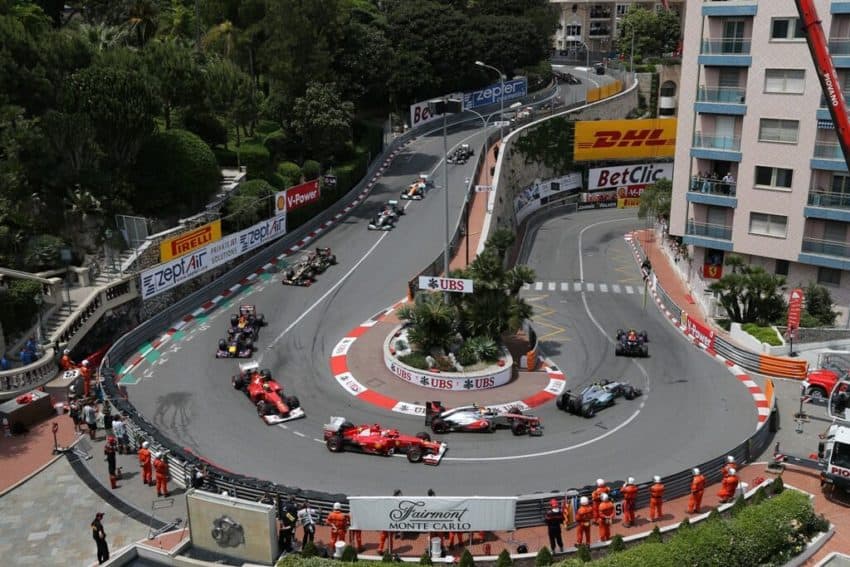
An Expensive city on the cheap
By Ryan McDonald
Although Tokyo is always somewhere in the top three most expensive cities, it can be seen on the cheap. Some of the most interesting places to stay in Tokyo are, coincidentally, the least expensive. You can easily spend a week in Tokyo for less than $2,500 and that includes airfare, hotel, food, and sightseeing. Here are some guidelines for how to travel cheaply in Tokyo.
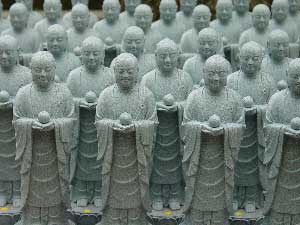
When to visit (and when not to)
The three major times to avoid are December-January around the New Year, late April-early May, and mid-August. Visiting Japan around early January is possible and I will mention a ‘must see’ during this time in a minute, but it’s not a cheap travel time due to everything shutting down from Christmas time to around January 5th (even the ATMs).
Late April-early May is the time for Golden Week where everyone gets around nine days off. Here’s something interesting about Japanese holidays: if there are two holidays with a work day in between them, that middle day automatically becomes a national holiday called “between day.”
Finally, mid-August is Obon (Oh bone) season where families stay home and celebrate their deceased ancestors.
Although the New Year is an expensive peak time to be in Tokyo, there is something that justifies going during this time. On December 23rd, the Emperor’s birthday, and January 2nd, the Emperor opens his palace and allows several hundred thousand people to enter the grounds.
Most of the Imperial family will come out seven times a day at preset times and greet the crowd behind glass. The most interesting part is seeing the 20-30,000 people at each show go crazy since the Emperor is still seen as divine. Listen for the word “banzai” which means [may you reign for] ‘10,000 years,’ you’ll probably hear it about 10,000 times.

To see the Emperor or the palace in general, get to Tokyo station (all trains go there) then exit the Marunouchi South Exit (mah rue no uu chee) and simply walk straight for a mile or so until you see the palace. On the above dates simply walk straight until you see thousands of people lining up. There is no admission fee.
A good time to go is late March and you can see the famous cherry trees bloom. The actual blooming time varies based on location and weather, but historically for Tokyo, it has been around the end of March from the 20th to the 30th.
My favorite place to hanami (ha nah me – look at flowers) is Ueno Park (uu eh no) or Aoyama cemetery’s (ah o yah mah) long straight tree-lined road. The best time to view them is in the evening as the sun goes down and the tree lights come on.
Japanese people will mark their favorite area with a tarp and sip sake while taking in the wonderful sight. If you are lucky you can see the petals fall from the trees and drift slowly to the ground in the cool breeze.
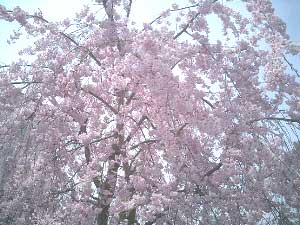
Pre-planning
The cheapest way to get here is to find a travel agent and say you don’t care when you visit, you just want the cheapest flight. I have flown round trip from Atlanta to Tokyo for $600, and tickets from major hubs, such as LAX or New York, can be even less during off peak times. One good resource is GoNomad.com’s airfare page.
Once you have your ticket you’ll want to buy a JR Rail Pass. JR (Japan Railways) runs about 70% of all trains in Japan, and all of the famous Shinkansen (sheen cahn sin) or bullet trains. The JR Rail Pass allows you to ride any JR train for free with only a few small limitations. It always pays for itself many times over.
A seven-day pass is usually less than $280. Note that you buy an ‘order’ overseas and trade it in for the actual pass when you land in Japan. From there you merely show the pass at each ticket window and go right through. Reserved seats might require a surcharge.
I’m here, now what?
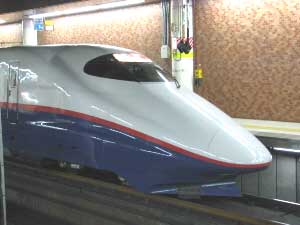
Once you land and change your Rail Pass at the clearly marked window, you’ll want to take the Narita Express or N’EX (Nah ree tah) since it’s free with the pass. It will take you to Tokyo Station or Shinjuku station (sheen jew coo).
You’ll most likely be jet lagged and want to go to sleep. The best way to avoid jet lag is to stay awake until around 9-10 p.m. so your body starts to adjust. You should also stay outside if possible since sunlight is crucial in readjusting our internal clocks.
There are several choices of accommodation for the budget minded. If you insist upon a western style hotel (as in American or Canadian, not wild west style), I sometimes use Toyoko-Inn.com. They start around $50 a night and have an English website and hotels all around Japan.
A cheaper option is the youth hostel. You don’t have to be young or a member, but it’s a bit cheaper if you are. Membership is only around $30 a year and can be purchased at the Hosteling International website.
To be included in the directory, hostels must meet high-quality standards so don’t worry about staying somewhere scary. Hostels in Tokyo are usually around $30-50 per person per night. There is one type of place that is cheaper and far more interesting, but there is one catch…

It’s not for the claustrophobic
If you have no problems with small coffin-sized confined spaces, you must stay in a capsule hotel. For around $25-35 per person per night, you can stay in a hotel where the entire room is smaller than a refrigerator. My favorite capsule hotel is the Asakusa Riverside (ah sah coo sah). It is directly behind exit #4 of Asakusa subway station. Once you exit #4 just look up and to the right and you will see the sign.
Note that most capsule hotels are for men only, but this one allows women. Genders are separated by floors and there are lockers for luggage. You’ll be given a loose-fitting outfit to wear while you are inside.
Capsule hotels are not a novelty to the Japanese people. They are designed for businessmen who work late and miss the last train (which is at 1 a.m.). One downside to this hotel is you have to completely check out each day and carry your bags with you, but there are luggage lockers all around Tokyo.
Must-see sights
Many must-see places in Tokyo are free or the admission is minimal. The Asakusa area has some interesting shrines and a long walkway with around 100 trinket shops.

Tokyo Tower is nice to look at and take pictures of, but with a $15 fee to get to the top I would suggest Shinjuku’s twin tower metropolitan government office. The top floors are free observation decks. You can even see Mt Fuji.
From Shinjuku’s West exit, just look for the twin towers and start walking. If you saw the movie “Lost in Translation” and want to see the famous crossing with thousands of people walking in every direction all at once, get to Shibuya station (she boo ya) and go out the Hachiko exit.
On Sunday mornings go to Harajuku and check out the wild fashions worn by local youth. Then see several nearby shrines.
If you want to take in some culture, I suggest getting a general admission ticket to a sumo match. Sumo takes place in every odd numbered month and matches are in Tokyo in January, May, and September. General admission tickets go on sale each day at 8:30 a.m. at the door and cost around $20.
The matches start at 9 a.m. and end with the grand champion’s match at 6 p.m. The best time to get there is after 3 p.m. That way you’ll see the best fighters and their entrance ceremonies. There are 15 days of matches starting around the 8th, 9th and 10th and ending around the 20th, 21st and 22nd. You can get an English translation radio for $5 and a $10 deposit. The website has a map.

There’s also Kabuki (kah boo key). Seeing a full 4-6 hour show will set you back $100-200, but you can see a single-show matinee for around $10-20. It’s general admission and there are only about 90 seats, plus spaces for 60 people to stand.
The single-show option lets you sit in for just one act. There is an English ear phone guide for about the same price as above. The Kabuki-Za (zah – theater) is located steps away from the Higashi-Ginza station (he gah she geen za) on the Toei-Asakusa (toe A) subway line.
Something unique about both sumo and kabuki is that women don’t participate. In sumo, women can’t even step into the ring. In Kabuki, men play all parts except for a few child roles. Women are technically allowed to be kabuki actors, but part of the essence is the challenge of male actors portraying women.
I’m hungry
There are some major western restaurants that aren’t too cheap but will give you that feeling of home. The cheap food will be anything that is native to Japan, such as ramen noodles, gyuudon (beef on rice), and even sushi.
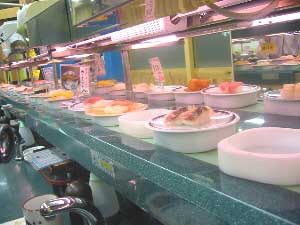
When smaller restaurants are open, they will have a small flag hanging outside the door. There are ramen shops with huge bowls of noodles for $5. The correct way to eat ramen is to use chopsticks for all the noodles then actually pick up the bowl and slurp out the juice. For beef on rice, my favorite place is Yoshinoya.
They sell “gyuudon” (‘gyuu’ means ‘cow/beef’ and ‘don’ means ‘on rice’) for about $5 per big bowl and they are open 24 hours. There is nearly one on every corner.
Kaiten sushi (kigh ten) restaurants are usually $1 a plate, and each plate has two pieces. I can fill up for $7-8 on relatively good sushi. Kaiten means ‘revolve’ so the plates come out on a conveyor belt. You grab what you want and pay per plate at the end. The plates are colored and each color is a different price.
Some places have English menus, but almost all places have either a picture menu or plastic food in the window. On several occasions, I have taken a waitress outside and pointed to something I wanted.
I don’t speak any Japanese….
Don’t worry, most every college-educated Japanese person understands some English. As long as you speak slowly and clearly and use easy words you will be ok. Remember a picture is worth a thousand words. Some people speak great English since they learn English in school from the first grade and then all through college. However, if you don’t want to risk it I would suggest one of these books.
Japanese money is easy to use. There are coins for 1,5,10,50, 100 and 500 yen. The bills include 1,000, 5,000 and 10,000 and rarely 2,000. For Americans and Canadians either think about 1 yen as 1 cent, or just forget about the last two zeros. 1,000 yen minus two zeros would be about $10 or 1,000 cents.
For more accurate results subtract about 15% for USD and 5% for CAD. So 1,000 yen would be around $8.50 USD and $9.50 CAD. The 10,000 yen note is like the $100 bill.
This was only a glimpse of how Tokyo can be cheap. Tokyo is so big it cannot be summarized in one article. If you want to visit Japan, don’t let money or language reasons stop you. If you do visit, email me and I’ll show you around.

Ryan McDonald has been teaching English in Fukushima prefecture Japan for more than four years and loves traveling in his spare time.
- These 9 U.S. National Parks Require Reservations in 2024 - April 17, 2024
- Take a Hike in Olympic National Park - April 17, 2024
- The Wild Mississippi: 2340 Miles Across Ten States - April 8, 2024


